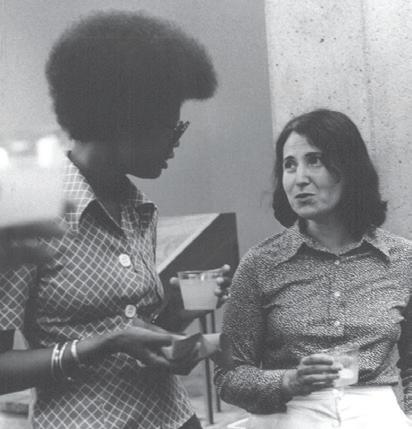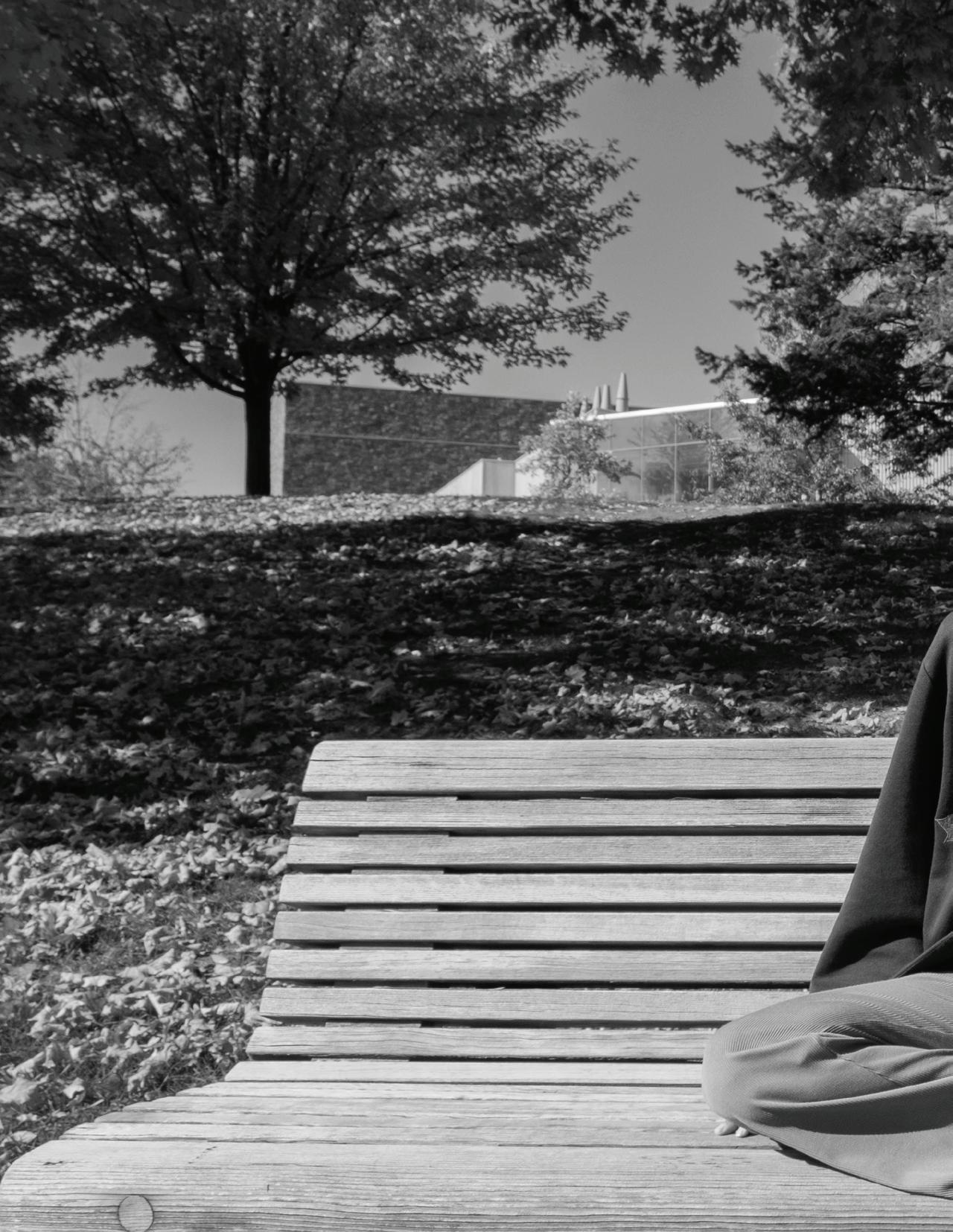apple way apple way


Green
Kirkland College welcomed its first class of students in 1968, becoming the first independent women’s liberal arts college in the northeast since 1926. The college offered a unique learning experience focused on independence, creativity, and interdisciplinary studies. Between 1968 and 1978, students would enroll at Hamilton College or Kirkland College, but could attend classes and use facilities from both schools. At Kirkland, the courses were not separated by departments, but instead, by Humanities, Social Science, Science, and the Arts. According to a 1967 Kirkland advertisement in TIME Magazine, this was meant to encourage interdisciplinary studies, considering “one course may combine History, Literature, Philosophy, and Art… just as life does.” At Kirkland, students received evaluations instead of grades, and professors, who mostly lived on campus, played an active role in students’ lives. All of the courses maintained small and interactive environments, contradicting the larger and more formal-styled lectures at Hamilton during this time. Kirkland College did not have a Dean’s List, Class & Charter Day prizes, Phi Beta Kappa, nor graduation honors; the school was meant to focus on learning simply for the love of learning. By 1978, Kirkland was forced to merge with Hamilton College, becoming the coeducational institution it is today.



9
models: Adrienne Thayaparan, Katie Hodulik, Iman Rahman, Jackie Wong, Allen Chen, Johnathan Rodriguez, Allie LeeHoffman

photographers: John-Charles Gaillard and Hannah Osinoff
stylists: Ravi Travers, Cole Kuczek, Ella Strasser, Sophia Fabiano, Zoe Carovano, Maggie Nye, Jordan Che beauty artists: Jade Levitin, Eva Pearlman, Ashley Cheffolway
layout: Talia Rosen
copy editor: Lydia Gross
10
Kirkland students had the glorious chance to dress during the seventies, the decade famously associated with bell bottom pants, tie-dye, and bright colors and patterns. At a closer look, the seventies was a wider exploration of new styles and designs afforded both from broader freedom and new technologies in fashion. Kirkland students took the liberal fashions of the seventies and the young freedom of being in college to adapt a wide range of styles. Students wore anything from jeans and flowing skirts, to L.L. Bean boots and flannels, and artisan jewelry and jean jackets. According to one alumna, Penny Dana, there were two main styles at Kirkland: the Kirkies, who wore anything from flowing skirts to painters paints and tended to study art and dance, and the Kirkettes, who were a later stream of students that tended to wear more mainstream styles. Penny remarks that “all the women always wore earrings, and jewelry, although Kirkies tended towards handmade and silver, artisan jewelry.” For a weekend look, Kirkland students dress up with proper skirts, with many opting out of wearing makeup, but perhaps blowing out their hair for a party. The most important fashion trend of Kirkland, however, was its final parting gift to its Charter class: a green hard hat. This symbolized their help in creating a new college for women, while simultaneously protecting the adored class against the ongoing construction at Kirkland.


11




12
Penny Dana was drawn to Kirkland College because the school offered a combined curriculum that neither a women’s nor men’s college independently possessed. The college provided a space that was uniquely empowering and supportive for women, while also offering the opportunity to take part in Hamilton College’s student experience. Penny mentioned that what she loved most about Kirkland was the literature courses, especially Russian literature which was something not offered at Hamilton. Further, she appreciated the written evaluation of her work instead of letter/number grades, as they offered more feedback. Penny took an equal number of courses at both Kirkland and Hamilton; She was a Government major at Hamilton and a Sociology concentrator at Kirkland. She mentioned, “I thoroughly enjoyed the mental rigor of foreign policy analysis, and the political philosophy component gave me the framework to fully appreciate foreign policy stances and decisions.” Her two favorite classes included: German History from the Reformation to the Eve of World War I, taught by David Miller, and the Government class taught by Pete Suttemeier, Methodology. Miller’s class helped her understand the history of her family’s emigration from Europe, and Suttemeier’s class “helped [Penny] to discern what is important/unimportant/misleading in analysis - [she] often cite[s] this class as the most important instruction that [she] have ever received”. Penny lived in Millbank for three years and in B Dorm, now Babbitt, during her senior year. Her favorite place to study was the third floor of Burke Library and she loved spending time with her friends in suite lounges, South, and Carnegie (at this time, the fireplaces were functional and often used!).

13
Looking at fashion trends, Penny shares that men at Hamilton were mostly all prep and wore jeans, corduroys, collared button-down shirts, and topsiders. Women at Kirkland were known by the nicknames of Kirkies or Kirkettes based on their clothing styles. Penny grew up wearing a school uniform prior to college, so she felt most comfortable in Oxford shirts, t-shirts, jeans, corduroys, and L.L.Bean boots, which they called “construction boots”. She leaned more towards the Kirkette style, and her staple outfit was always jeans and a t-shirt. Penny mentions that to this day, she remembers some people whose fashion sense really stood out: a Hamilton student nicknamed “The Lid” who always wore a stove-pipe hat, another who NEVER wore shoes, and a Kirkland student who was often found wearing southern-style “ball gowns”.


14
Julie Weinstein, another alumna of Kirkland College, was a creative writing major who could often be found walking in the Glen contemplating life. Above everything else, Julie loved Kirkland and her time on the hill. She graduated just as confused about what she would do with the rest of her life as when she first arrived, and she wouldn’t have changed a thing. Julie truly loved her education at Kirkland. During her time there, Julie fondly remembers long conversations with literature professor Carol Rupprecht, which she described as a “great gift.” She remarks that literature professor George Bahlke “pushed us to make connections, to think deeply, to consider novels from the perspective of so many other disciplines.” Julie originally arrived at Kirkland as an Anthropology major, but after a summer internship at a dig in Southern California, she discovered that Archeology, her passion since childhood, required a great deal of science. Recognizing that she didn’t have a brain for science, Julie took a semester off and traveled around Europe with her boyfriend and, along the way, reconnected with her fondness for poetry and became a creative writing major. Eight years after graduating, Julie found her calling in Psychology and earned her masters, entering into what she describes as an immensely fulfilling world. She reflects that, “in many ways I connect Psychology to Archaeology -- delving into who people are now rather than delving into ancient secrets.” Julie’s story came to a happy full circle and she believes her time at Kirkland was the foundation of it all.

15
Aside from her academic joy at Kirkland, Julie enjoyed other parts of college life. She attended concerts in the Chapel and Hockey Rink, and particularly loved the Folk Music Weekend, where folkies gathered and music was played all over campus. She adored the Glen and made many great friends at Kirkland. Julie lived in B dorm, what is now Babbitt, all four years and loved it. She explained that living in the suites was a perfect harmony of alone time in her own room, while also having the option to join other people in the common living area. Looking back to her four years at Kirkland, Julie advises her younger self to not feel that college is a be-all to end-all. As her story emphasizes, no one really knows what they want to do with their lives and stifling expectations to know this can be so pressurizing. Julie reflects that there is so much value in just being present to learn and experience everything because the knowledge you gain will give you tools to figure out life.
“50th Anniversary of Kirkland Charter Signing to Be Commemorated.” Hamilton College, https://www.hamilton.edu.



Burns, Nick. “Kirkland College 52 Years Later.” Clinton Historical Society, https://clintonhistory.org/kirkland-college-52-years-later/.

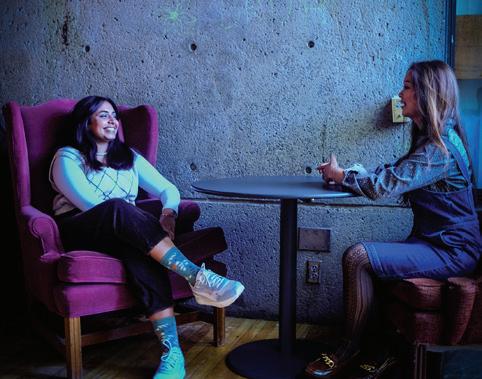
Hamilton Class & Charter Day. 4 May 2007, https://www.hamilton. edu/documents//class-charter-day/skerritt_ccd07.pdf.
“History & Traditions - College History.” Hamilton College, https:// www.hamilton.edu/about/history/full.
Kirkland Photography Archive. Burke Library.
16


by sage liveLy 17







18
“



19
CONFIDENCE IN A NIGHT OUT DOES NOT HAVE TO MEAN SHOWING AS MUCH SKIN AS POSSIBLE, IT CAN COME IN ALL KINDS OF STYLES. ”
Whether you’re heading off campus or staying on the hill with friends, a night out is a weekend staple for Hamilton students. Nights out provide an opportunity to express oneself in fashion, more than during a typical weekday. It’s a chance to take fashion risks and wear what you feel the most confident in, which is different for everyone. For most of our models, the night out look includes leather pants or jackets, lace detailing, bold animal prints, funky sunglasses, and all kinds of glitz and glam - “Anything that’s shining, shimmery,” photographer Imani Mitchell explained. Imani isn’t alone in her love for glitter. Others described trying to achieve a ‘Euphoria moment,’ or simply incorporating a pair of glamorous earrings to add something shiny to their look. Feeling confident during a night out does not have to mean showing as much skin as possible. In fact, confidence can be displayed through all kinds of styles. For co-editor-in-chief Aisling Mockler, feeling confident can come down to just ‘a good pair of corduroys’ or a ‘statement jacket.’ More than any clothing piece, a going out look for Aisling is all about the earrings - unique to each occasion, always big, silver, and most importantly, dangly.



For others, the going out outfit is all about wearing something to dance in. Beauty and hair director Jade Levitin, expresses feeling most confident “in the middle of the dance floor.” Model Quinn Jones, focuses on the swing of the hair; “When I have a perfect ponytail, like when I had a really good hair day, and it just kind of hits, and it’s very swingy, that’s when I feel very confident.” Through jewelry, hair, makeup, and statement clothing pieces, there is a medium for everyone to express themselves and feel their best when going out.
Coming up on chillier months, it is important to stay toasty in the midst of an evening chill. Model Sam Howard, suiting a dapper patterned blazer and button down, zooms down Green Apple Way past Milbank’s lit up windows and KJ’s soft glow. Along the road, models wear faux fur coats, mixing textile and contrasting textures.


20
For individuals who like to leave it all on the dance floor, sometimes the less clothing, the better. “I like when I’m wearing the least amount of clothing because… body positivity,” model Max Ganem explained. “I feel good when I’m not constricted; I love to see everyone happy in their own bodies, that’s just a cool vibe. Super easy to dance in.” For Max, nights out are about picking out a fun outfit, spending time with friends, and seeing where the night takes them. Beyond style preferences, going out is a way for people to come together, have fun, and feel their best.
A few going out styles to be on the lookout for this season are bold eye makeup, statement jewelry, corsets, leather, and all things glitter, pearls, & sequins. Model Chrissy Crespo sports the ultimate colored eyeshadow look complete with vibrant pink glitter and bright blue lids. Going out is a fun way to experiment with new eye makeup looks, like the one Chrissy is wearing. Additionally, Chrissy complemented the bright eyeshadow look with a gold sequin mini dress. Another glamorous look like Chrissy’s can be seen on model Rachel Lion, who wears a chunky silver necklace with a sheer top covered in pearls over a white bralette. The glitz and glam trend amongst night out fashion can be executed through jewelry, clothing, or makeup, which allows everyone to incorporate their own creativity and sense of style. Leather is another trend that can be seen amongst different clothing pieces. Model Alex Weremchuk wears a vintage leather jacket whereas Rachel wears a pair of brown leather pants in a second look. Styling versatile faux, vegan, or vintage leather gives an outfit an edgy, yet effortless look. When going out, it is common to see leather in the form of pants, outerwear, shirts, dresses, vests, and boots. The beauty of night out fashion is that it can be applied in whatever way one sees fit.
At the end of the day, dressing for a night out is all about confidence - wear what makes you feel good, put on some groovy music, and forget about the rest.

models: Claire Harpel, Rachel Lion, Alex Weremchuk, Ryley McGovern, Sean Zhang, Max Ganem, Chrissy Crespo, Quinn Jones, Sam Howard photographers: Imani Mitchell, Sophia Viscarell0, Amanda Sedaka stylists: Ravi Travers, Maeve Zimmerman, Cole Kuczek, Ella Strasser, Maggie Nye, Jordan Che, Javier Garcia, Charlotte Clark, Louisa Crozier beauty artists: Jade Levitin, Abby Lowder layout: Sophie Christensen; copy editor: Hadley Noonan

21






22
by: Bryna Jekogian & Norma wCalleja


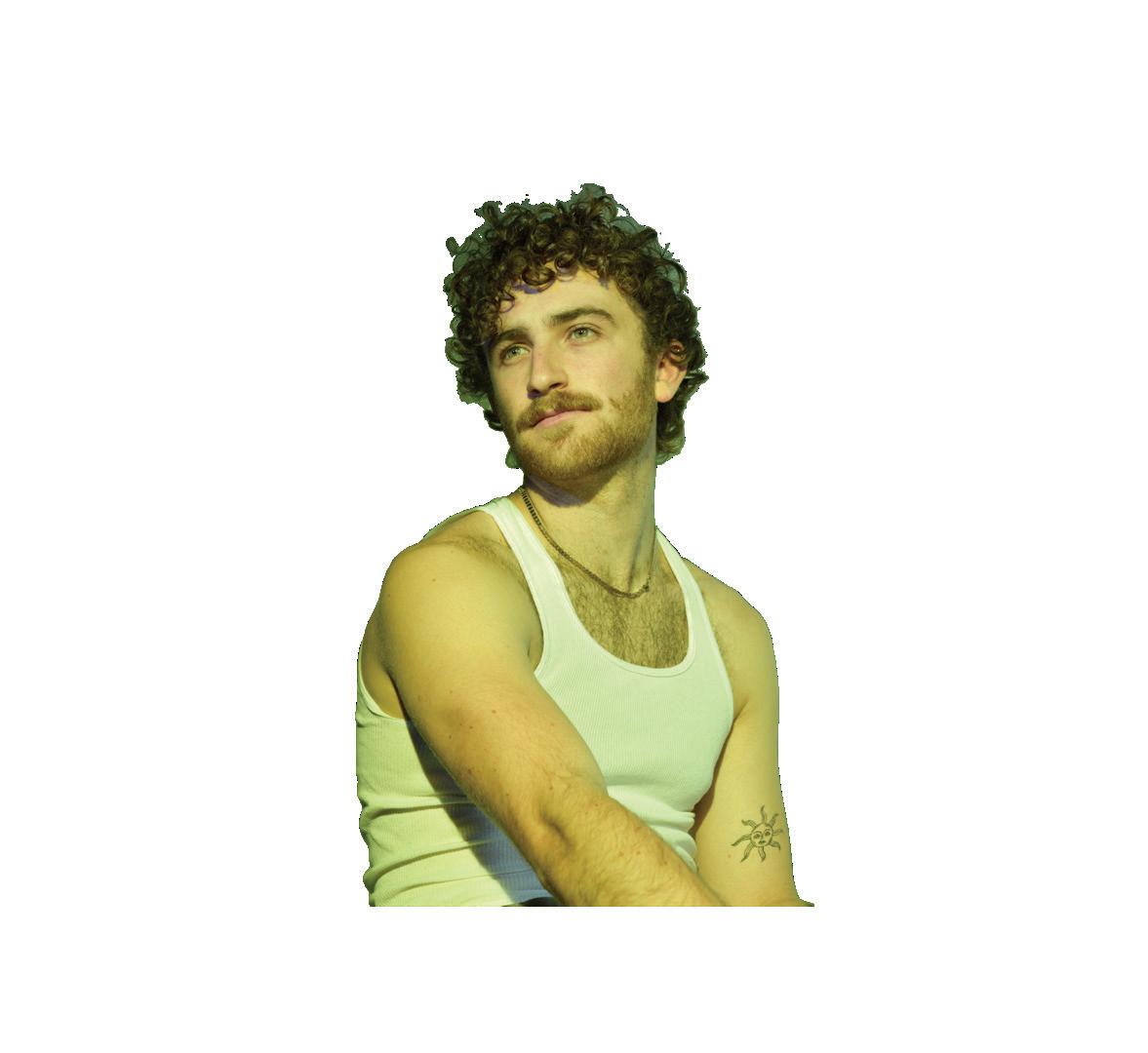
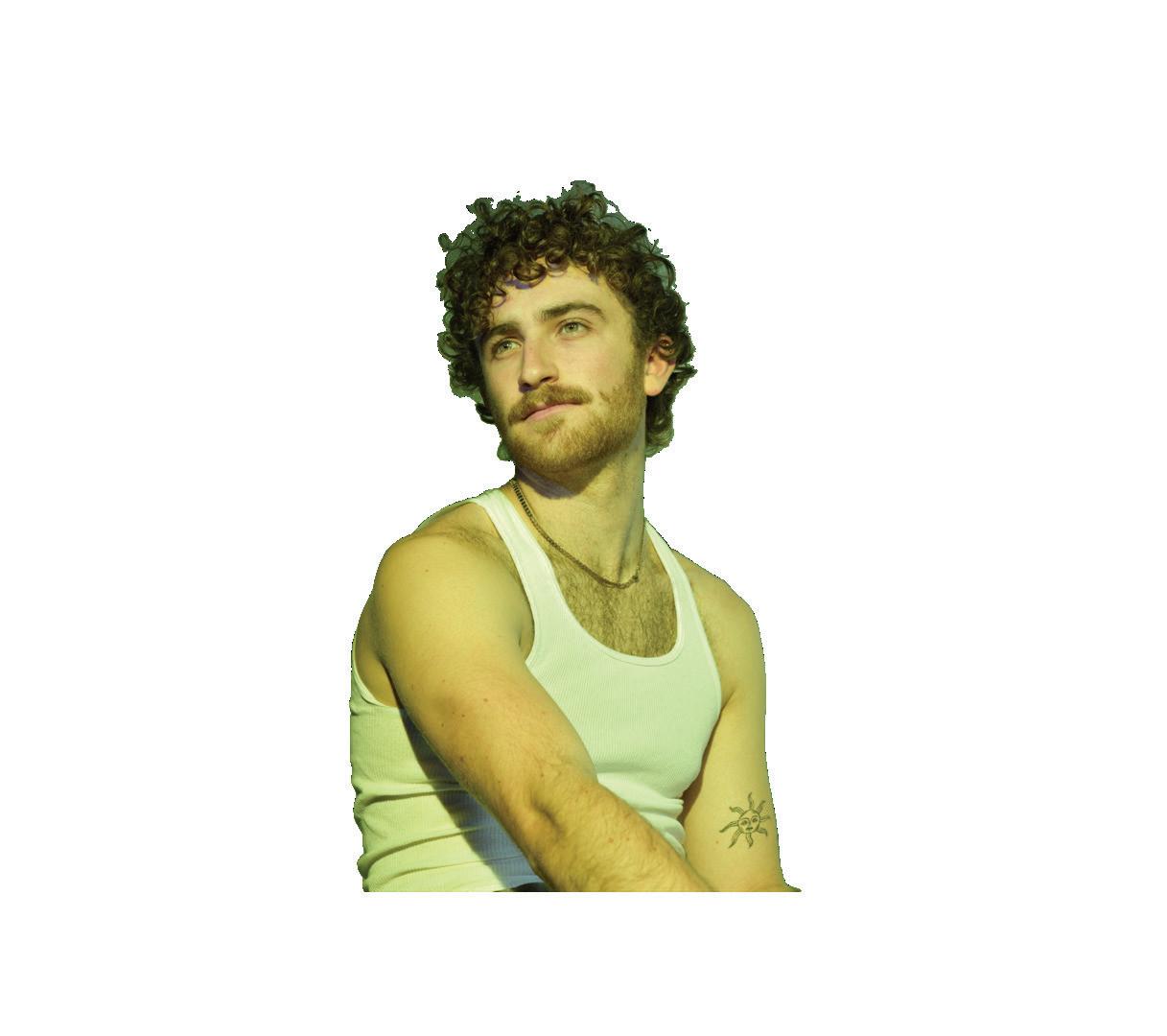






23













24
Body modifications on campus take all kinds of forms, particularly in piercings and tattoos, students are able to use these mediums to express themselves in their own unique ways, part of the beauty of body modifications is the personal touches that set each of them apart. Throughout history, members of Indigenous cultures have expressed belonging within their community through the use of body modifications. Many people in these cultures believe that tattoos are a form of healing and are used in religious rituals. For others, tattoos and body modifications allow them to embrace their Indigenous culture and to decolonize themselves from Western influences. Three of our models told the stories behind their tattoos. They varied from getting them for their family, to getting tattooed for religious purposes. Juasline “Juju” Plasencia, Ariana Silva, and Fatima Oliva are Hispanic models who show off their body modifications. All of their tattoos have a profound connection to their heritage and to who they are as people. Ariana struggled with her identity, so for her; “body art was a way to represent myself and value my heritage a little more.” Her tattoos tell the story of when she immigrated to the United States and how both of her identities merge into one. Her identities are represented by a black-inked leopard tattoo and a red-inked tiger. These aesthetic tattoos contrast one another visually, but for Ariana, they display deeper emotional significance. They tell her story of being a first-generation immigrant who struggled with finding who they were in America. Her black-inked tattoos represent the Americanized version of herself, which contrast to her red-inked tattoos that represent her Ecuadorian





25
Likewise, Fatima’s tattoos have significant meaning to her family, who are of Mexican descent. Her knee tattoos hold a special phrase that her parents would say, “Ni de aqui ni de alla” (“Not from here not from there”). It’s tattooed with an Old English font, which many of her relatives use in similar tattoos. Her first tattoo is a replica of the Matisse painting ‘Dance’, but instead of being depicted unclothed, the people wear traditional Mexican dresses.








26
Though the practice of modifying one’s body is more prominent than ever before in the U.S., many Indigenous cultures have practiced tattooing for ages. Afro-Latinx and Indigenous communities are embracing their culture by showing off their body modifications. Juju believes “tattoos have to do a lot with spirituality” and further emphasizes that “tattoos are a way of putting yourself out there in the world.” Their piercings express and embrace their Taino Indigenous roots, specifically Juju’s tongue piercing, which serves as a reminder to speak their truth. Juju’s chest and back tattoos are related to Buddhism, which remind them that “in this tumultuous journey you have to have a pure heart.” Their piercings and tattoos work in tandem to encourage them to stay true to themself.

Tattoos serve as visible signals of an individual’s values that they want to present to outsiders. They can indicate belonging to a certain subculture or interest group. These types of indications can be displayed through various types of symbolism. Many of Abby Lowder’s tattoos depict animals. They have a family of four bats on their hip, each embodying a member of Abby’s immediate family. Their other tattoos show off other “spooky animals,” as Abby calls them. Abby comments that people who like reptiles are likely to have tattoos. When they see a person with a reptile tattoo, they know that they may share a similar interest with that person. The bond between people with similar, visible tattoos can form before two people even speak to each other.
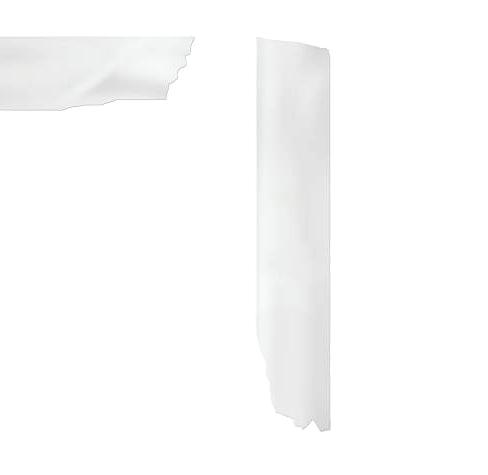






27
they wanted tattoos to simply fill their arms with art. Now, their body art serves as a sort of biography, showing off the small objects that have accompanied Jay through their life. Tattoos provide people with the unique ability to show off what is important to them; this ability is unmatched by any other wearable article.








28
contributors:
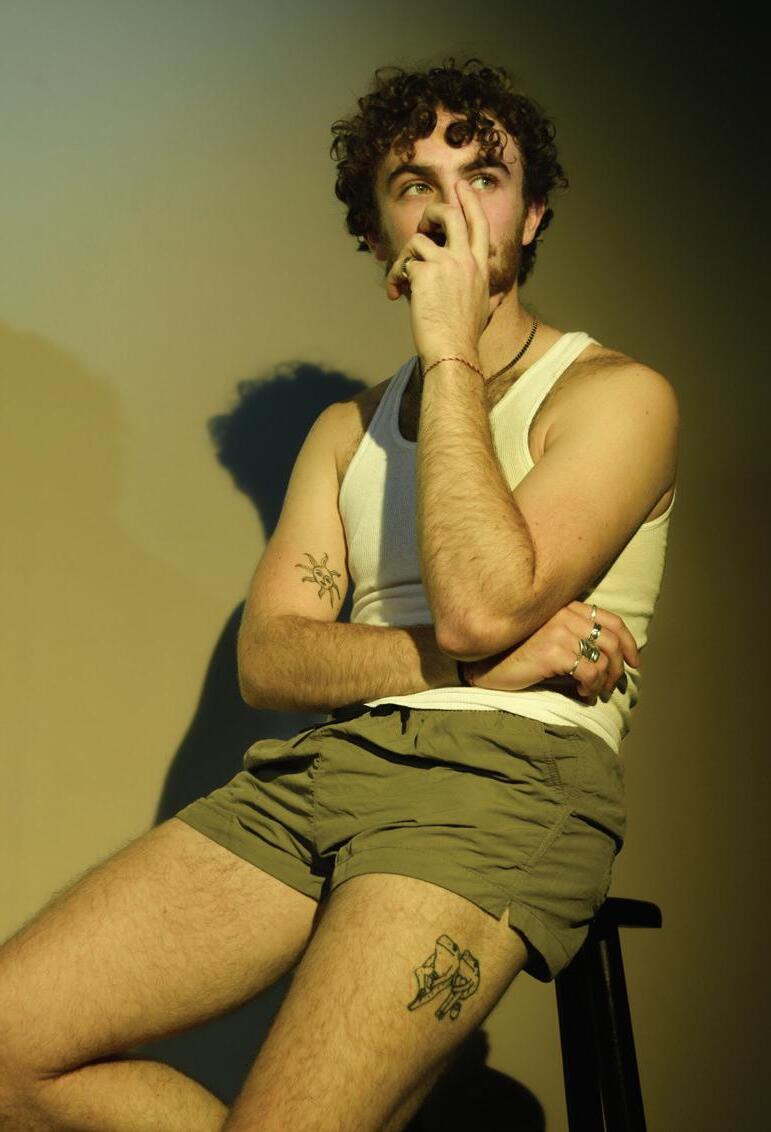
models: Jay Pratty, Fatima Oliva, Juju
Plasencia, Ariana Silva, Abby Lowder, Henry Wilson
photographers: Barb Aristakesyan, Imani Mitchell

stylists: Charlotte Clark, Zoe Carovano, Ella Strasser, Ravi Travers
beauty artists: Jade Levitin, Abby Lowder

layout: Andrea Hayman

copy editor: Sage Lively

29





30
ALEXANDER JARMAN
31
Alexander Jarman is the Assistant Curator of Exhibitions and Academic Outreach at the Wellin Museum. From the moment we sat down together, Mr. Jarman made it clear that the pinnacle of his role at the Wellin is education and enriching the student experience. He sees himself as not only a representation of Hamilton College, but of the artists’ featured in the Wellin and the story they are trying to share through their art.


Mr. Jarman can often be seen around campus wearing polished suits and an iconic pair of whiteframed glasses. This aura of professionalism has been innate in him since he was a child, as his mother always stressed the importance of dressing nicely. “There was a lot of church when I was growing up and that was an event that you dressed up for,” he says. “There was a sense of purpose and responsibility in presenting yourself well.” This desire to present oneself nicely has not been lost on Mr. Jarman, as it is an essential part of his job at the Wellin.
Alexander Jarman first came to the Wellin Museum in 2020, but his appreciation of art and his desire to deeply explore its complexities began from a young age. Mr. Jarman was born in the “glimmering metropolis” of Cincinnati, Ohio and later attended Northern Kentucky University for his bachelor’s degree. He recounted a specific moment in his intermediate painting class during Sophomore year where he grew frustrated with the lack of advanced criticism during a critique. He remembers thinking, “I was frustrated not just at my fellow students but at myself because I did not have the vocabulary to even talk about the things I thought I was interested in.”
From that point, Mr. Jarman switched his major from Painting to Art History so that he could properly talk about his passion for art. He curated a show for his senior project and realized that this would be the trajectory of his career. “That was the most addicting drug I’ve tried in my entire life,” he shared about his first curatorial show. After college, Mr. Jarman moved to San Diego and received his masters in Art History from San Diego State University. He later worked at the Walters Museum in Baltimore, then ultimately decided he wanted to work at a university museum.
32
writer: Lydia Gross
copy editor: Bryna Jekogian

photographer: Amanda Samaka
layout: Maeve Luparello
33
At the Wellin, Mr. Jarman is tasked with finding artists who would appeal to a wide range of disciplines, and discovering ways in which Hamilton professors can incorporate exhibitions into their curriculum. Mr. Jarman loves talking about art, especially with students. He says, “I can be having a bad day, I can be feeling sad, and when I have the chance to go into the gallery and talk to a group of people about why visual art is important, it energizes me.” He believes that he has been tasked with an incredible responsibility, which is to effectively recount the stories the artists are trying to communicate in their work. This is something near and dear to his love of art, as he expressed, “I’m never suggesting that art is a silver bullet. It’s not going to solve any world problem, any social problem, but I do think if we can bring people into this institution and make them even 10% more empathetic to the concerns of what an artist is talking about, then we have provided an important service.” He shared that one of his favorite shows the Wellin has put on was Yashua Klos: Our Labour.


Mr. Jarman’s role as an educator has a tremendous impact on his sense of style. He sees himself as a representation of his institution, therefore it is part of his job to look presentable on a day to day basis. He says, “If you are dressed well, that creates this aura of friendliness around you. I think it makes people feel a little easier talking to you.” Mr. Jarman would describe his personal style as the “finance bro who recently discovered they like art better.” Even though he has to look presentable for his role at the Wellin, this does not stop him from adding a touch of personality to his classic suit and loafers. He described his personal style as, “Classy with just a touch of playfulness.I love to have
the one weird button on my suit or the really outrageous socks. I can still look professional but it lets you know that I have a playful side.” Everyone on campus can recognize Mr. Jarmen from his iconic white glasses. It is just one of the many ways in which he is able to stay memorable and represent his institution while adding a touch of playfulness. His keen appreciation for art also influences his style, as he loves the incorporation of different textiles and textures into clothing pieces. He believes that contemporary art is constantly breaking its own rules and norms, and that his own fashion style is coincidentally following suit. He doesn’t care as much about rules as he used to. Mr. Jarman believes that his role as a curator transcends the museum space, as “A really great art exhibition and a really great closet both have a narrative. They both have a story to tell. That is where you can hook people and hold their attention.” Just like an exhibition space, Mr. Jarman’s closet speaks volumes about his life story.
Despite his love for fashion, Mr. Jarman does not turn a blind eye to the problems facing the fashion industry. He believes that sustainability is a tremendous issue and that the industry has become addicted to the production of cheap clothing. He says, “We talk a lot about artists being ingenious, making do with what they have, and I would love to see how the fashion industry could think the way a lot of consumers think. How can I combine things I already have in different ways to be as versatile as possible.”
34

35
This fall, shoes have dominated fashion at Hamilton and beyond. Consumers have been purchasing comfortable, casual, and durable shoes, which is evident by the prevalence of Adidas Sambas and Birkenstock Boston Clogs at Hamilton. The sales of both shoes have been amplified by their influencing presence on Instagram and TikTok.
The Adidas Samba was developed over 70 years ago and is one of Adidas’s best selling shoes. On the Adidas website they retail for $75 but are often sold out. They are then listed for much more on resale websites like GOAT and StockX. Made from recycled and vegan materials, Sambas are a smart purchase. Recently, celebrities like Rita Ora, Bella Hadid, Frank Ocean, Rihanna, and Kendall Jenner have been spotted wearing the affordable and fashionable shoe. Sambas were originally created to give soccer players traction on icy fields, but have since been repurposed to be more of a lifestyle shoe for everyone.
Sambas are everywhere around campus. Worn by a variety of students at Hamilton, Sambas are a versatile shoe that can be paired with anything. Traditionally black with three white stripes or vice-versa, they are a subtle but a cool compliment to a variety of outfits and styles. At Hamilton College, Sambas are often paired with low rise jeans, corduroys, long skirts, and high socks. Some students dress them up; some students dress them down.
Similar to their strappy sandal, the Boston’s cork footbed creates a very comfortable shoe. Birkenstock Bostons were developed in the 1970s as a vari ation of the company’s ever popular sandal. They come in a variety of colors and styles, and one variation is even lined with shearling fur for maximum comfort and warmth. The Soft Footbed Boston retails for $155, whereas, the Shearling Boston retails for $170. Similarly to the Samba, Bostons gained traction from their celebrity owners. Seen on the likes of Kristen Stewart, Whoopi Goldberg, and Leonardo DiCaprio, Bostons are almost always completely sold out in stores and online. On Poshmark, they are being sold for upwards of $350 — over double their retail value. At Hamilton, they are a popular cross between a house slipper and casual shoe: easy to slip on and they match almost anything because of the complimenting cool colors, like Khaki and Clay. As it gets colder in Clinton, people are wearing their Bostons with fun, warm socks. In this way, they become a means for accessorizing, adding an opportunity to incorporate one’s own creativity into their shoe choice.






36
copy editor: Norma Calleja











37










38
until next time... next time...
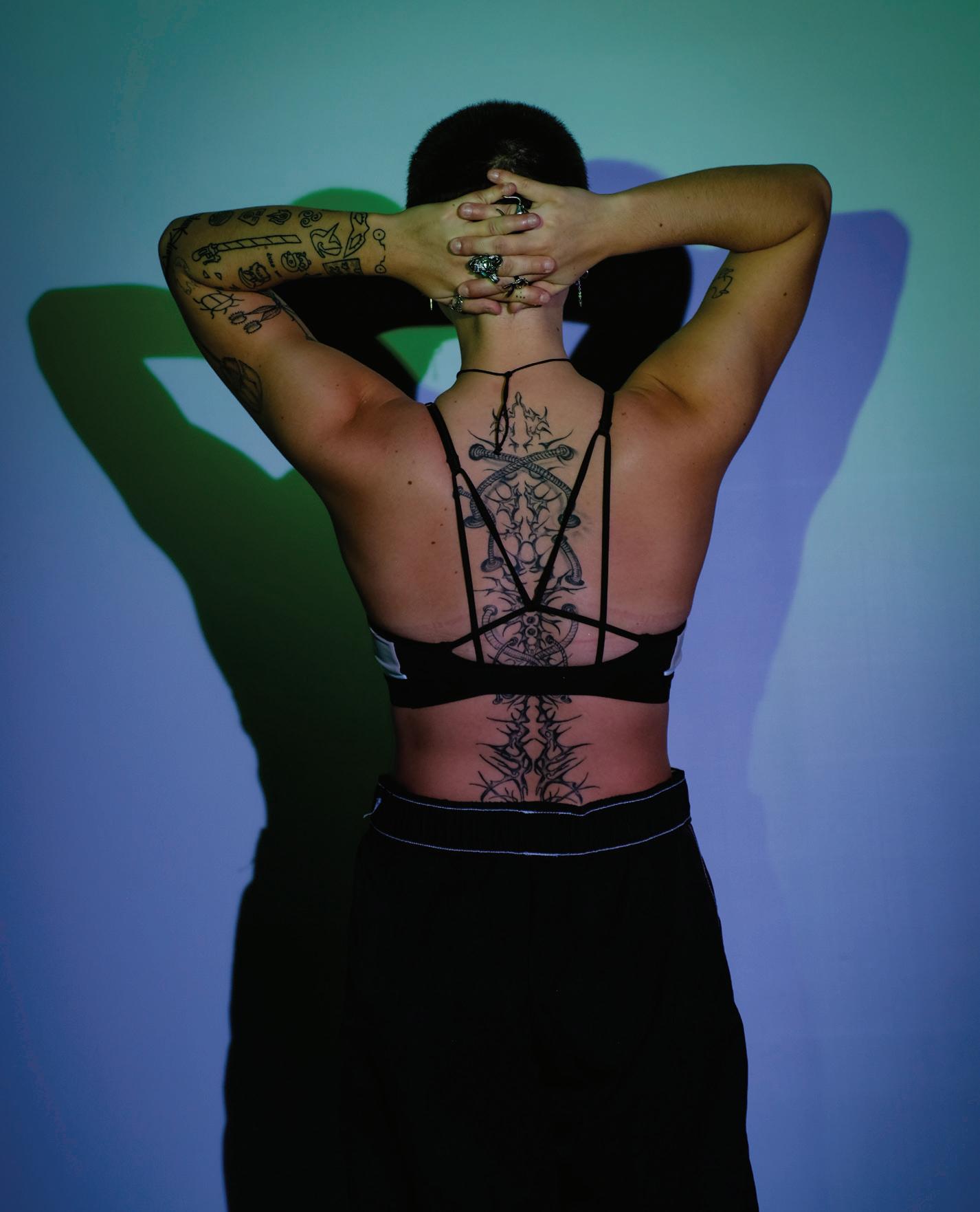
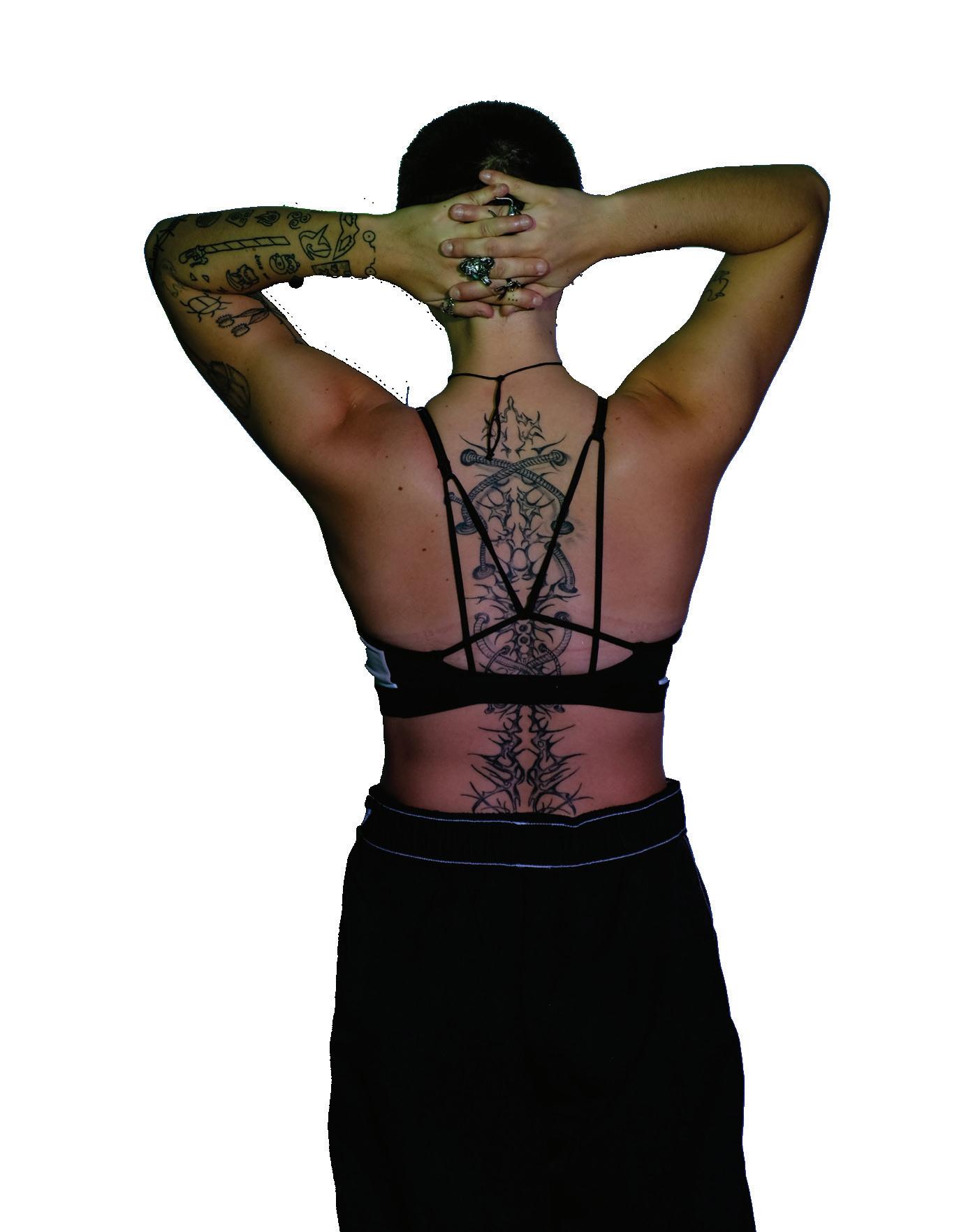
@hcsignaturestyle















